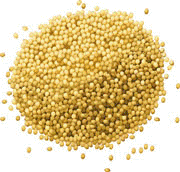International Sorghum and Millet Collaborative Research Support Program (INTSORMIL CRSP)
Date of this Version
8-1-2006
Document Type
Article
Citation
INTSORMIL Report No. 4, August 1, 2006
Abstract
While USAID is focused on international assistance and outreach, the Collaborative Research Support Programs (CRSPs) also benefit farmers in the United States. By establishing strong relationships with national agricultural research systems in other nations, U.S. research collaborators gain access to knowledge and expertise in crops native to these countries. Thus, the CRSPs effectively operate as a two way street, extending U.S. scientific and research expertise to collaborating nations while receiving valuable insight and access to germplasm from other production environments for U.S. agricultural deployment.
INTSORMIL CRSP principal investigators, located at leading U.S. universities (Kansas State, Mississippi State, Nebraska, Purdue, Texas A&M and West Texas A&M) and the USDA leverage their skills in sorghum and millet to help boost the economic viability and productivity of these crops for American farmers. Both sorghum and pearl millet are produced in a dynamic environment in which new diseases and insects emerge, insect pests evolve resistance to pesticides, climatic conditions change, and market demands and preferences change. Within this changing environment, INTSORMIL plays a critically important role in predicting U.S. issues and needs relating to sorghum and millet and proactively works to develop new grain or forage hybrids, diagnostic tools, and strategies to keep these crops at the cutting edge of agricultural productivity. What are some specific examples as to how the INTSORMIL program has benefited U.S. farmers and the U.S. agricultural research community?


